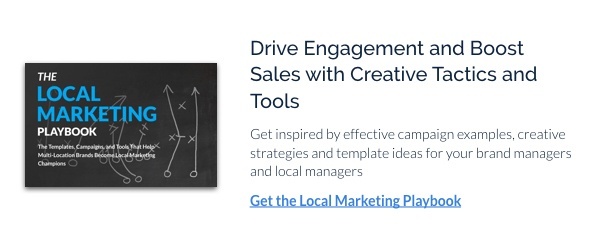When introducing any kind of Marketing Resource Management (MRM) technology to the workforce, enterprise corporations must adhere to a few basic strategies to streamline implementation. Adopting MRM systems requires a significant amount of time, effort and organization, as well as a consistent and regimented process to effectively utilize the software.
The primary benefit of implementing and properly using MRM technology is that it enables companies to work through internal complexities in their marketing processes. From improving work management to establishing a clear and consistent process for asset management and organization, MRM solutions enhance operational efficiency and drive marketing excellence across the whole department.
To fully explain what MRM technology is and how enterprise teams can benefit, Gartner released a report outlining the five major competencies of MRM including strategic planning, financial management, creative production management, knowledge management, marketing fulfillment and marketing performance management. These foundational elements serve as the backbone of any truly effective strategy for how to use different, possibly overlapping MRM software.
Is your company thinking about investing in MRM technology? Before you begin, consider these five top tips to get the most out of your collection of MRM systems.
Tips to Maximize Your Marketing Resource Management Software
#1) Sketch Out Your Existing Marketing Hierarchy
When adopting an MRM software solution, start by documenting your brand's existing organizational structure and processes. You don't have to make it a perfect map of everything that happens in marketing, but it's important that you capture the basic relationships between different roles in the department and the most important processes that touch those various roles. Use this blueprint to document all the roles which are vital to your key marketing processes. By understanding your internal landscape, you'll have a much better understanding of how the type of MRM software you're evaluating will be used.
When crafting this hierarchy, try to capture the following:
- Where are your marketing assets? In order to properly organize and provide consistent access to marketing assets, it’s important to establish a process for how they are used, as well as one central source of content. This eliminates confusion between team members. Marketing assets are the digital files and physical objects that you use in the marketing process. They include your brand's intellectual property such as critical files or existing brand guidelines, and can cover any kind of marketing pieces or materials you produce, like ads or even training materials.
- What are the marketing roles within your organization? To get your project off on the right foot, review the marketing roles and responsibilities that are currently found within your organization. Include what each role is responsible for doing, as well as which processes those roles impact. You want to try and map out how different roles relate to one another in the processes your MRM system will touch.
- What do your current marketing processes and workflows look like? Next, document your marketing processes at a high-level. Ideally, you want to understand the steps involved in those processes, but not at such a granular level that you have trouble writing them all down. Through this process, you should find some key pieces of information such as what types of software your team is using in each process and how specific roles on the team are involved.
- What metrics are you trying to move? By assessing current performance metrics and setting specific, achievable goals, your team can properly evaluate which MRM systems and processes you should consider adopting.
By answering these questions, you'll have created a really useful organizational blueprint that is going to be critical to implementing or reconstructing your MRM ecosystem. An added benefit is you'll actually be able to share this outline with the vendors you choose so they can better understand your problems and ensure their system fits the parameters of your brand.
#2) Decide Where to Invest
Once you've defined and clearly outlined your existing marketing hierarchy, a decision needs to be made about how to manage your MRM project. Since Marketing Resource Management is made up of all kinds of different software systems, you should try to prioritize which of those individual systems you need. Here are the three avenues you can follow:
- Invest in a Project Management tool. If you have a lot of people touching your marketing processes at HQ and the processes feel disorganized, think about investing in a tool for project management, like WorkFront or Jira. Tools like these have the capacity to track, manage and allocate tasks and projects to specific team members and keep track of where everyone's spending their time. A project management system will help allocate human resources effectively.
- Invest in DAM software. If your processes at headquarters look solid, but you realize you have a lot of assets that aren't well organized or easy to find for your colleagues at HQ, look for a DAM instead. It helps marketing teams manage large numbers of files such as images, video and audio files. DAM software also includes capabilities that make it easier to find and use files in the marketing department; things like Unique ID content codes, digital content workflows, automatic metadata tagging and batch uploads.
- Invest in LMA software. If your processes at HQ are solid but you find that your team is over-extended by marketing requests that come in from the field, look for Local Marketing Automation software. LMA software, such as CampaignDrive, enables your local partners or affiliates in different markets to find and use marketing collateral that is on-brand and fully customized to them and their local store.
When deciding to make a change in your marketing technology, taking the time to invest in the right kind of MRM software is crucial. Spend the time needed to truly determine what kind of solution you need today, and save the rest until you've solved the immediate problems. Otherwise, you'll have to make this decision again in a few months.
Give your local affiliates the tools they need to be local marketing champions. Check out the Local Marketing Playbook. 
#3) Get Executive Buy-In
In order to get your executive team to buy into an MRM solution, always start with your objectives. It’s important to present a detailed, yet simplified presentation that will explain your recommendations and why you're making them. By taking the time to pull together the materials that will support your case (see points #1 and #2 for what those are) you’ll be prepared, informed and confident in explaining why your recommendation is the right way to go. To round out the discussion with the executive team you should always incorporate important performance metrics, employee feedback about the current state of affairs and information from the potential software providers on how their systems can do the job.
Here are some effective tactics to get executive buy-in on a new MRM process or software system:
- Build a solid use case. You'll very likely need others on your team to sign off on the approach you take to improving the way you manage marketing. Build a use case for enhancing your current approach that's built on specific objectives. Don't shy away from data or predictions on this one: document how you think efficiency will improve or any financial advantages you foresee. The use case describes how the new solution will benefit the department, and supports that vision with facts.
- Include comparisons and reviews. Collect relevant comparisons of the systems you're evaluating, as well as user reviews or references for any platform. Provide enough information for executives to get a solid snapshot of the way the proposed MRM solution has already benefited other companies.
- Avoid sharing too broadly. Share exactly what you need to do and why you need to do it. Don’t get lost in the details. Come up with a concise reason for making one decision or another. Don't leave it entirely up to a committee to figure out how to make that decision.
When pitching to the rest of your team, be confident. As a marketer who has documented the way your brand's processes actually work, as well as having first-hand knowledge of your department's performance objectives, you have the intel you need to get your MRM project off the ground in the right way, no matter which direction you decide to go.
#4) Build a Rollout Plan
Once you've gotten the team's agreement on how to move forward, it's time to get cracking on implementation. By creating a rollout plan that outlines your strategy for new or updated Marketing Resource Management software, you can get your team aligned faster. A detailed rollout plan helps communicate the who, what and how process changes or software updates are happening in your marketing operations. It also communicates clearly where in your MRM ecosystem to expect changes to occur.
When putting together your rollout plan, consider the following:
- The systems. Are you going to replace one system or many? Are you doing them all at once, or step by step? In your rollout plan, include details any and all systems that will be affected by the project. This helps prepare the team to make necessary changes to their processes, as well as any changes needed in roles and responsibilities that might come along with them as well.
- The timing. If you can help it, try to change one thing at a time in each leg of the project. Unless there is a dependency between two different steps in the project which means they need to happen at the same time, it's best to move methodically. Too much change will overwhelm your team, and make it difficult to tell what is and isn't working as things "go live."
- Necessary previews or walkthroughs. Have you scheduled a walkthrough for those key stakeholders you got involved earlier? Determine who needs to be in the know and schedule the proper time to take them through the rollout plan and collect their comments. A second set of eyes (or a third or a fourth) can be a big help on projects with this level of complexity.
Preparing your rollout plan will get your team more familiar with any new process faster. That can only help you avoid disruptions as you move forward on the project.
#5) Conduct Annual Reviews
After you’ve successfully launched a new system, stay informed on whether or not it’s actually being effective. Have you established any key performance metrics? Many MRM systems include analysis features that help you track usage of the system over time. Use these to pinpoint trouble spots and try to stay on top of reviewing this data at least annually but often as frequently as monthly.
An annual review of your MRM software kind of like an employee performance review, and should include:
- Preset performance metrics. In order to conduct a good annual review, it's important to determine performance metrics in advance. This way, you can measure improvement year over year.
- Trends in efficiency. Highlight how employees or processes became more or less efficient with the use of MRM software. Review the entire time period in order to accurately identify both positive and negative trends and events that affected this key value driver.
- Comparisons to previous reporting periods. Even if you have not consistently delivered annual reports or reviews of your MRM tools in the past, try to set a baseline so you can make a fair comparison between your new software and processes and your old ones.
Frequently reviewing your Marketing Resource Management software will objectively determine which aspects of your process are working well, and which can be made even better.
Operate With Greater Accountability
With high-performing Marketing Resource Management software, marketing departments operate more efficiently and with much greater accountability. The executive team will be able to take a pulse of where things are at, as well as find the insights needed to identify areas for improvement. With these simple tips, you now have a documented system to respond to and adopt changes in your MRM strategy over time.
If you've identified that local marketing is one of the areas your brand needs to take to the next level, consider starting your next MRM project with a Local Marketing Automation system. With convenient access to easy-to-use templates, smart features to help local marketers improve their performance, reporting and more, LMA tools like CampaignDrive empower local partner and gives corporate marketing teams great visibility and control over the "last mile" of their brand marketing.




